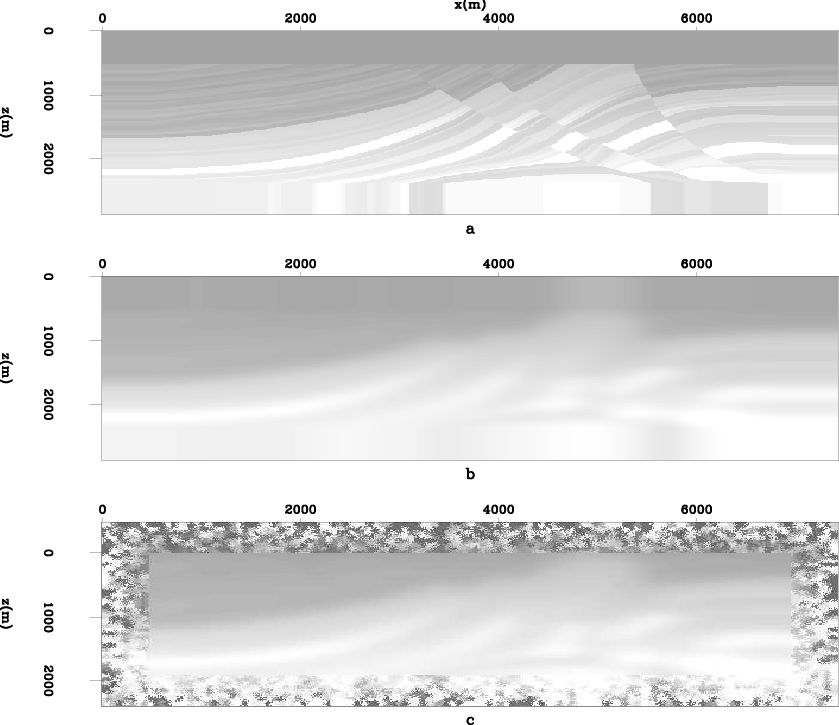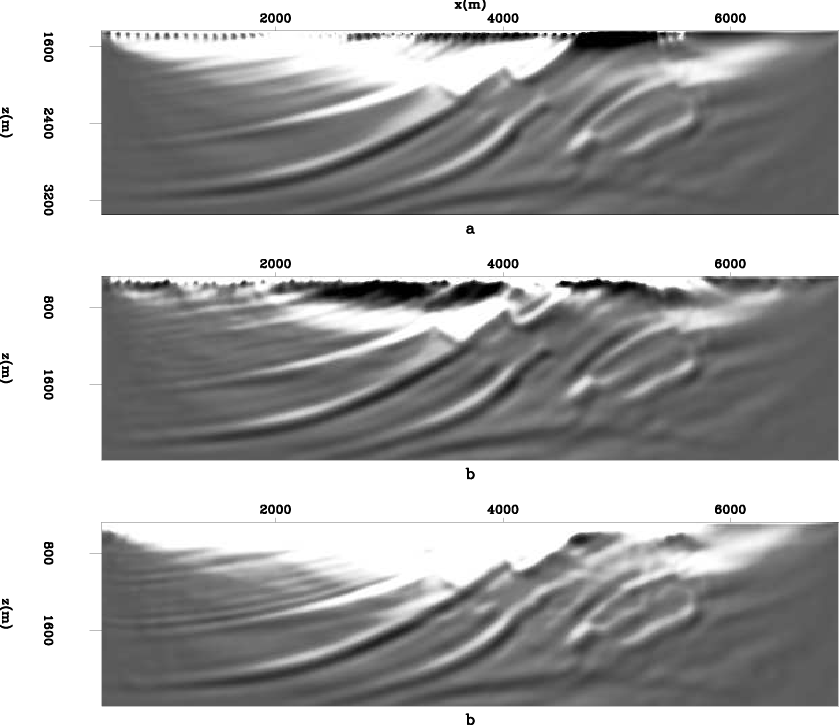|
|
|
|
FWI with different boundary conditions |
 -meter spacing in both
-meter spacing in both  and
and  . The starting model is a smoothed version of the true model. The survey geometry simulates fixed spread land acquisition. A total of
. The starting model is a smoothed version of the true model. The survey geometry simulates fixed spread land acquisition. A total of  shots are used with
shots are used with  m shot spacing. Figure 1 a shows the true model with continuation of velocity in the boundary region, figure 1 b shows the starting model with continuation of velocity in the boundary region, and figure 1 c shows the starting model with random velocity values in the boundary region.
m shot spacing. Figure 1 a shows the true model with continuation of velocity in the boundary region, figure 1 b shows the starting model with continuation of velocity in the boundary region, and figure 1 c shows the starting model with random velocity values in the boundary region.

|
|---|
|
vmodbw
Figure 1. Different velocity models with different boundary regions: a) true velocity with continuation of velocity in the boundary region; b) starting velocity with continuation of velocity in the boundary region; c) starting velocity with random velocity values in the boundary region. |
|
|

|
|---|
|
gradcomp
Figure 2. First iteration gradient with different boundary conditions:a) gradient with absorbing boundary condition;b) gradient with random boundary condition;c) gradient with continuation of velocity in the boundary region. |
|
|
|
|
|
|
FWI with different boundary conditions |